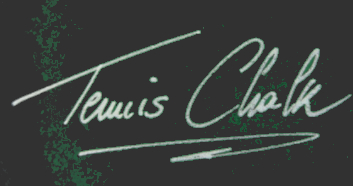How Stade Roland Garros Came About…
The best way to fully appreciate the magical, almost mythical, history of Stade Roland Garros is by “Looking Back…” and taking select snippets from the past… beginning with the facility’s construction and moving through the decades until it staged the inaugural Grand Slam of the Open Era.
Going into the 1927 Lawn Tennis Challenge Round, as the Davis Cup final was called in those days, France was seeking its initial victory when it faced the United States on the grass courts at the Germantown Cricket Club in Philadelphia, Pennsylvania, September 8-10. Having won but one match in its two previous Challenge Round appearances against the US, a one-sided 5-0 defeat in 1925 and a 4-1 follow-up embarrassment the next year, France was an underdog.
On the final day of play and trailing 2-1, it was assumed that the US would win one or both of the two remaining singles matches. France had other ideas and swept back-to-back four set contests. The victory ended the US’s six-year Cup reign but more important, it enabled “Les Bleus”, the country which joined the annual competition in 1904, to claim the game’s foremost trophy for the first time.

While the triumph was celebrated across France, shrewd tennis officials voiced “look ahead concern…”. The French Championships, first contested in 1891, became an international tournament in 1925. Played each spring at either the Racing Club de France (RCF) or Stade Français Paris (SFP), (The club’s alternated hosting the competition.)… neither Paris facility had a stadium big enough to properly feature a Challenge Round final.
At the time, the format enabled the champion nation to compete only once annually… in the final against the country that was victorious in the Inter-Zonal Final, which was a playoff between the America Zone and the Europe Zone winners.
It was decided that a 10,000 seat stadium was needed to showcase France’s elite status in the game. The directors of the Racing Club de France and Stade Français Paris, realizing what was at stake, purchased a little more than seven acres in Porte d’Auteuil, in the 16th Arrondissement on the west side of Paris. They personally financed the loan needed to secure the property… and here is where the “Looking Back…” story becomes enthralling…
Émile Lesieur, who was President of Stade Français Paris Athletics and had been a fleet Rugby Union winger competing for France on 12 occasions (In addition, he tied the unofficial 100 meters world record running 10.8 seconds on May 6, 1906 at St. Cloud), guaranteed the agreement…with one stipulation… that the new facility was named Roland Garros.

Lesieur, who was widely respected, had been Garros’ classmate at HEC Paris, the French Grande école of higher education, from 1906 through ‘08. In fact, he had sponsored Garros’ Stade Français Paris membership (the exclusive club that included elite athletes and those in the upper echelon of French culture).

Eugène Adrien Roland Georges Garros was athletically, as well as intellectually, eclectic. Sent to Cannes as a youngster to recover from pneumonia he took up cycling and became a schoolboy racing sensation. A solid rugby player (who occasionally played tennis with friends), off the pitch his interest in “discovering…” led to a wide range of pursuits… including opening an automobile dealership in Paris and developing a friendship with Ettore Bugatti, the Italian/French automobile designer and manufacturer. Flying, though, was his passion… and he became a renowned aviator, setting speed, distance and altitude records.
At the outbreak of World War I, Garros joined the army, and initially flew reconnaissance missions for Escadrille 26. Air combat was just beginning to evolve… which led him to become involved in developing a system that allowed a machine gun to fire through a propeller’s axis (keeping pilots from destroying the propeller and bringing down their own planes). Once the mechanization had been perfected, combat called…. and he answered the summons.
In April 1915, ground fire brought his plane down in German territory. Unfortunately, the crash did little damage to the aircraft… which resulted in it being sent to Anton Fokker in Germany. “The Flying Dutchman”, as he was called, was an outstanding pilot and an accomplished airplane designer. In 1910, he was planning to attend the Bingen Technical School, in Germany, to become an automobile mechanic but transferred, because aviation had become his focus, to Erste deutsch Automobil-Fachschule in Mainz.
In 1912, he moved to Johannisthal, which was near Berlin, and started Fokker Aeroplanbau. He analyzed the wreckage from Garros’ plane and improved the machine gun-propeller timing sequence…making German aircraft more combat worthy.
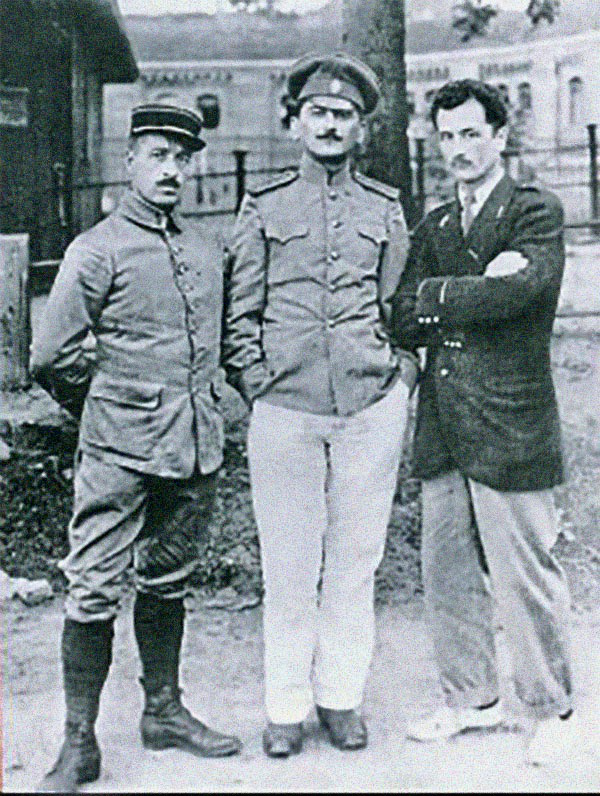
Having been captured, Garros remained a prisoner until February 1918 when he and fellow pilot (and countryman) Anselme Marchal, after bribing guards and wearing German-like uniforms that they had made, were able to escape. Tennis… racquets that is, made it possible…because maps of German troop locations, hidden in the hallowed handles, had been sent to Garros at the Scharnhorst Camp in Magdeburg in eastern Germany where he was interned.
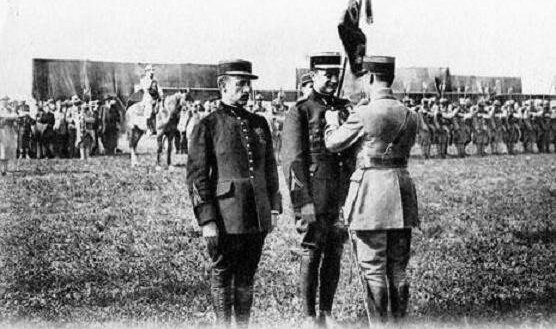
Garros and Marchal eventually reached the Netherlands then London (the escape made them national heroes and resulted in their receiving the Légion d’honneur). Returning to France, he rejoined Escadrille 26. On October 5, 1918, he was killed when his plane was shot down near Vouziers, Ardennes… the nation mourned Garros’ death which occurred a day before his 30th birthday and a month before World War I ended.
Lesieur also had war adventures… At its start, he was taken prisoner, in 1914, by the Germans but escaped making his way to Switzerland. He returned to France and joined the army… and like Garros became a pilot… Fortunately, his experiences did not result in tragedy…
When the war ended, he relaunched his rugby career while becoming an adept business executive. Once his playing days concluded, he gained wide acclaim for his Stade Français Paris Athletics program leadership… which enabled him to have a lasting impact on French tennis… one that ensured his friend Roland Garros’ legacy.
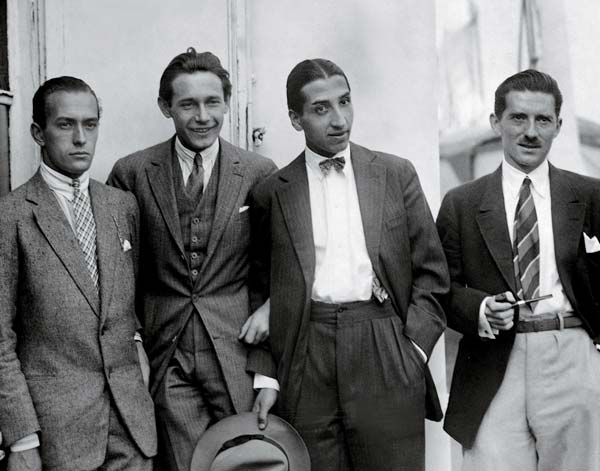
Readers are aware that during the 1920s and ‘30s, Borotra, Brugnon, Cochet and Lacoste were not members of a distinguished Paris architectural firm. Though, in their own way, Jean Borotra, Jacques Brugnon, Henri Cochet and René Lacoste, the legendary Les Quatre Mousquetaires (The Four Musketeers), were distinguished draftsmen… their 1927 Challenge Round success ultimately brought about the construction of Stade Roland Garros.

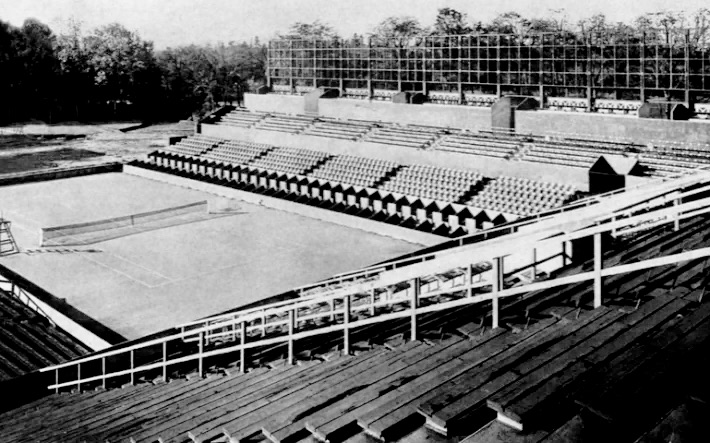
The facility had to be developed “tout de suite”… Building began in the fall of 1927 and the facility, which had five Terre Battue courts, was completed in the spring of 1928… in time to stage the French Championships, May 24th – June 4th. In order to reduce building expenses architect Louis Faure-Dujarric designed Court Central in the form of a Saint Andrew’s cross which proved to be cost effective and more important architecturally ingenious…creating an aesthetically captivating stadium.

The French Championships set the stage for the much anticipated July Davis Cup competition. The Inter-Zonal Final, played July 20-22 at Stade Roland Garros, resulted in the US defeating Italy 4-1 to earn a place in the Challenge Round. The tie was held July 27-29 and Paris, along with the rest of France, was agog… and Les Quatre Mousquetaires lived up to expectations winning decisively, 4-1. The story remained the same over the next four years as France retained the Cup defeating the US in each of the Challenge Rounds. In 1933, Great Britain entered the fray downing the US, 4-1 in the Inter-Zonal Final then escaping from Stade Roland Garros with a 3-2 victory over the defending champion.
June 14, 1940 was a day of ignominy in Paris history… German troops occupied the city and remained in residence until August 25, 1944… a total of 1,533 days of terror that changed lives and forever altered French society.

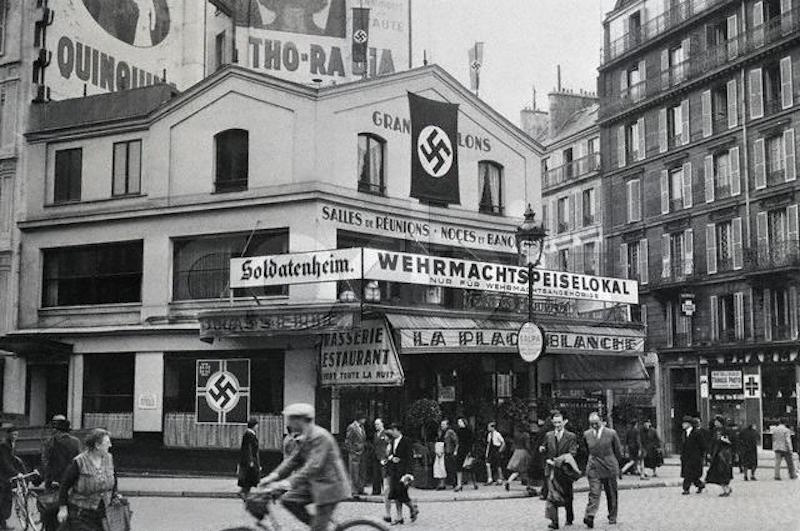
According to the Fédération Française de Tennis (French Tennis Federation), in 1940, “There was no Roland Garros competition due to World War II”. The FFT further decreed that from 1941 to ‘45, the tournament was “cancelled” …
Au contraire (on the contrary)…The Tournoi de France (French Championship) took place each year in August at Stade Roland Garros. Along with the French, competitors from Belgium, Luxembourg and Switzerland participated. Respected tennis historians have long believed that it is an affront to those who played, many of whom had been in combat prior to France’s surrender; some had been taken prisoner and escaped or were released; a few had been active in the Resistance…and still became champions…but the FFT does not officially recognize any of the Men’s and Women’s Singles, as well as the Doubles and Mixed Doubles winners. Those who distinguished themselves in Singles included Frenchmen Bernard Destremau (1941 and ’42) and Yvon Petra (1943 – ’45) along with Alice Weiwers of Luxembourg in 1941 and ’42, Simone Iribarne Lafargue of France in 1943, Raymonde Veber Jones of France in 1944 and Lolette Payot of Switzerland in 1945.
Stade Roland Garros was forever stained having, from September 1939 until June 1940, been a “Centre de Rassemblement”. (The polite name for an internment camp where political dissidents and foreign nationals were detained.) Those euphemistically “housed” at the facility, during the 10 month period, lived and slept in “the caves” the areas in and beneath the stairwells in what is now Court Philippe Chatrier (over the years, rumors have persisted that players have said they could “Feel the ghosts…” while waiting in the corridor before walking onto Court Chatrier to play their matches).

In his book, “Scum of the Earth”, Arthur Koestler, a communist and a Hungarian Jew who was classified as an “Undesirable Alien”, described the revulsion…the smell of living in the caves… where around 600 prisoners slept, like sardines, on wet straw because areas in the stairwells dripped water. Most of the captives knew nothing about tennis but when they were permitted to walk in the stadium, they could see the names of (Jean) Borotra and (Jacques) Brugnon still on the scoreboard.
(In the 1939 Roland Garros Men’s Doubles final, the Frenchmen lost an epic 4-6, 6-4, 6-0, 2-6, 10-8 contest to the American tandem, Don McNeill [the singles champion] and Charlie Harris.)
[From Stade Roland Garros, Koestler was transferred to the Le Vernet Internment Camp in Ariège (Vichy France)…before political pressure was exerted and he was allowed to immigrate to Great Britain where “Scum of the Earth” was published in 1941. In the book, he said, “…We would make jokes about mixed doubles. Indeed, compared to our experiences in the past and the future, Roland Garros was almost an amusement park.” ]
September 17, 1944…the Sunday, twenty-three days after the Germans abandoned the city, a celebration took place at Stade Roland Garros. The Match de libération (the Liberation Match), an exhibition between Henri Cochet and Ivan Petra was the highlight of the day…It was made further newsworthy by Simmone Mathieu… the two-time Roland Garros Women’s Singles and six-time Doubles champion, dressed in her Forces françaises libres, (Free French Forces) captain’s uniform, serving as the chair umpire.

Petra’s 6-1, 6-2 victory was incidental…The joy of being free… without the menace of German presence… made the first activity held at Stade Roland Garros “extraordinaire…”
To paint a more vivid picture of the area where Stade Roland Garros is located, attention must be turned to the neighboring Bois de Boulogne…the seminal 2,155 acre woodland Napoleon III created after staging his own coup d’état in 1852. His decision to transition from President of the French Republic to the Emperor of France gave rise to the creation of the rolling grassy expanse of trees and lakes …that is, essentially, across the street (actually a wide boulevard ) from Stade Roland Garros.
The park has been used in scenes in books written by Émile Zola, Gustave Flaubert, along with Dan Brown’s “The Da Vinci Code”. Impressionists such as Eduard Manet, Pierre – Auguste Renoir and Vincent van Gogh depicted the expanse in their paintings.

During the occupation, the German’s took full advantage of all the Bois de Boulogne offered. Troops camped there. Tanks parked under the magnificent trees to camouflage their presence. Regrettably, it was also a killing ground… As a monument commemorates… 35 Resistance members, all in their early 20s, who were lured to the park by a French collaborator. They were on a mission to collect arms to continue the effort to reclaim Paris. The Gestapo was waiting and executed everyone on August 16, 1944.
(Historical aside…General Dietrich Hugo Hermann von Choltitz surrendered the German garrison on August 25, 1944. In his biography, “Is Paris Burning”, Choltitz claimed that he disobeyed Hitler’s order to leave Paris, “a pile of rubble”. In actuality, because of the continued Resistance activities he no longer controlled the city…and more important, the German forces didn’t have the materials necessary to demolish buildings and bridges.)
“Mon dieu…” ( My God) May 1968 was a historic time in Paris…and across France…
Roland Garros, May 27-June 9, became the first Grand Slam championships of the Open Era in which professionals were allowed to compete against amateurs…But it shared the spotlight with the civil unrest that had erupted on May 1st when students at the Sorbonne, in the heart of the Latin Quarter, began protesting the closure of Paris University at Nanterre. Police attempted to quell the disturbance but their aggressive tactics served to ignite “the festering animosity” that had been awaiting a national spark.

Workers throughout Paris, supported by those in the rest of the country, joined the students… They demonstrated and went on strike bringing day-to-day life to a standstill… and staggering the economy.

Tennis provided a respite…Though it was difficult to travel across the city because of the disruptions and general uneasiness, (along with the Metro strike), fans “escaped” to Stade Roland Garros and found tranquility watching the competition… Ken Rosewall, the No. 2 seed, stealthily made his way through the draw defeating fellow Australian and top seed Rod Laver 6-3, 6-1, 2-6, 6-2 in the Men’s Singles final.
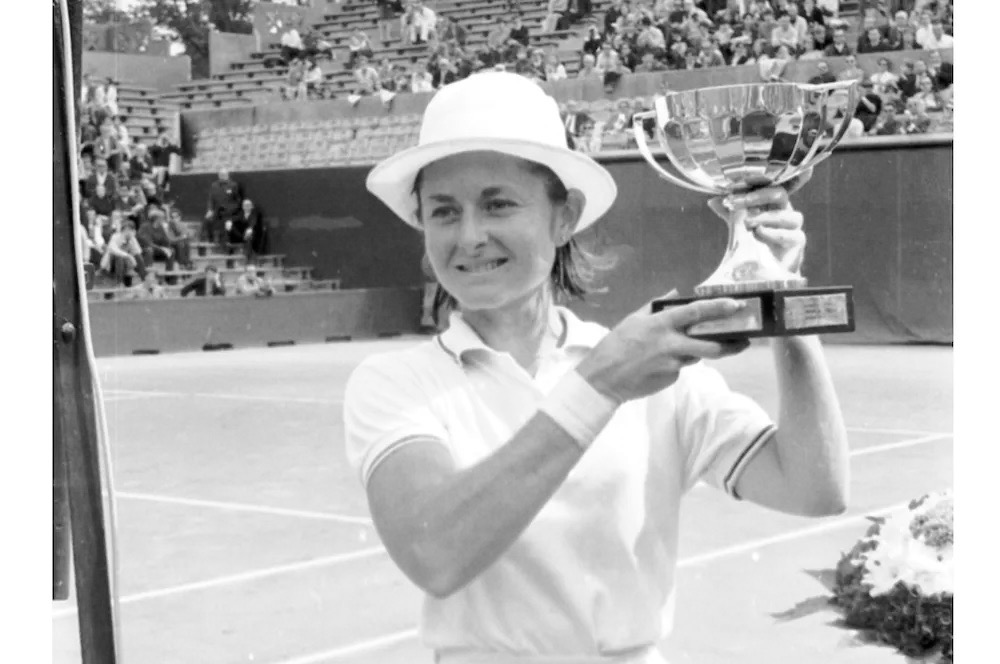
Nancy Richey of the US, the No. 5 seed, slipped past Ann Haydon Jones of Great Britain, the No. 2 seed, 5-7, 6-4, 6-1 for Women’s Singles honors.

The seven weeks that have become known as “May ‘68” had a telling cultural and ethical effect on the country. Foremost, it instilled a degree of hope…thus the slogan “Adieu de Gaulle”… The April in 1969 elections indicated that France was finally ready to lessen the strangulation of Gaullism… in favor of a more moderate form of government, without the aging, ultra-conservative stern leader, Charles de Gaulle in command.
De Gaulle turned 78 in late November 1968 (and passed away 13 days before his birthday in 1970); Stade Roland Garros, in May ’68, was a mere 40. Both were formidable…and had stood the test of time. One’s influence was significant but the other’s has proven to be ever-more lasting…and will forever be because of a friendship that resulted from shared HEC Paris experiences in the early 1900s…
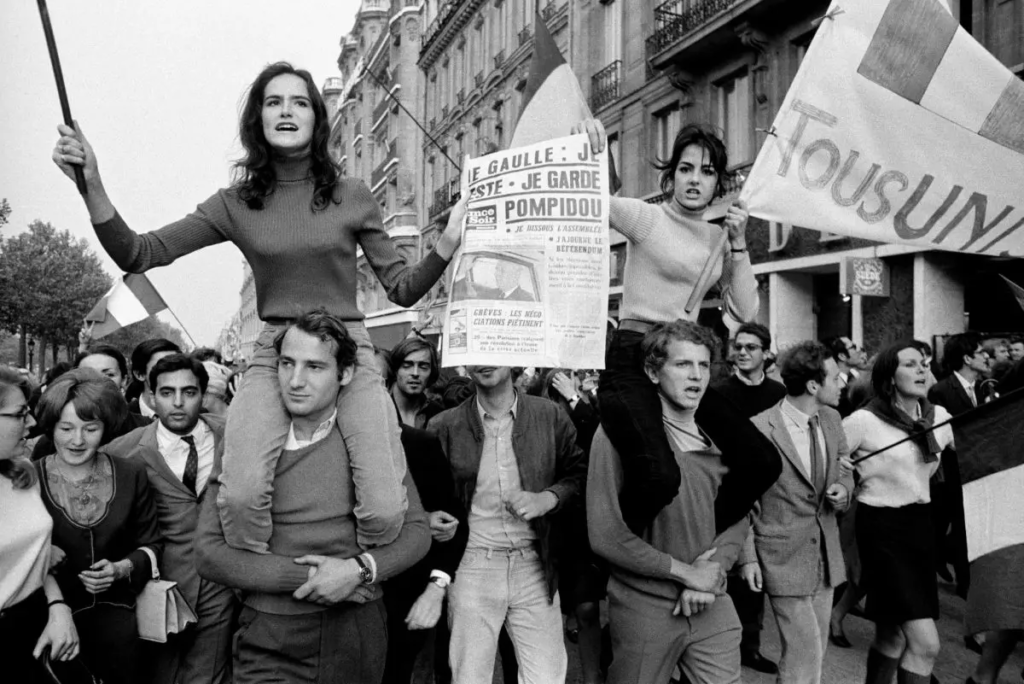
(This year, the 127th edition of Roland Garros will take place May 28-June 11)
